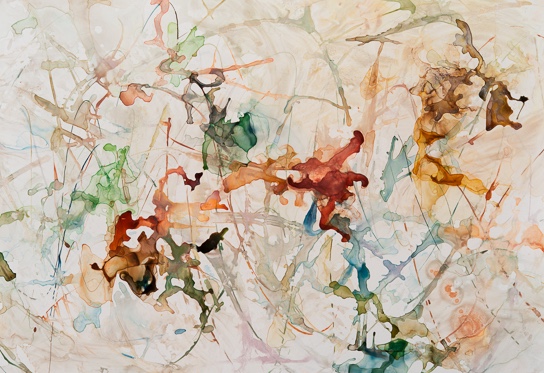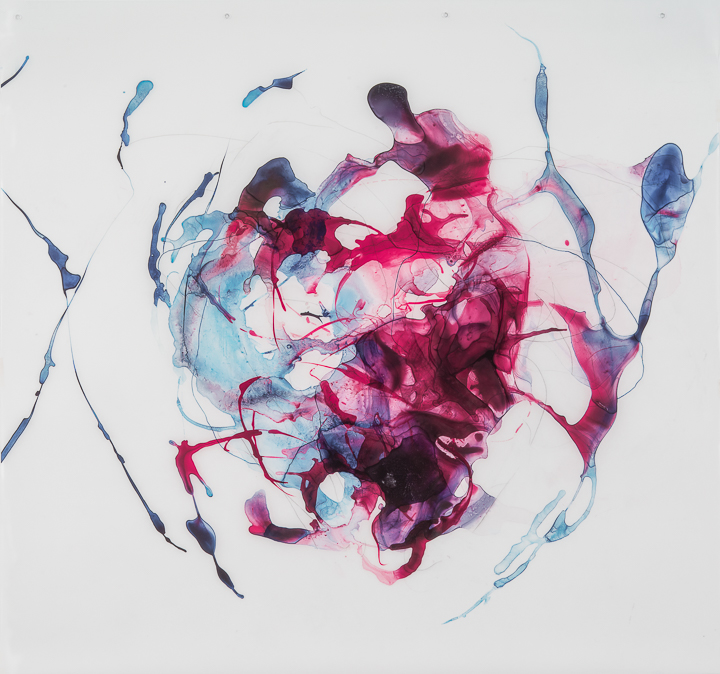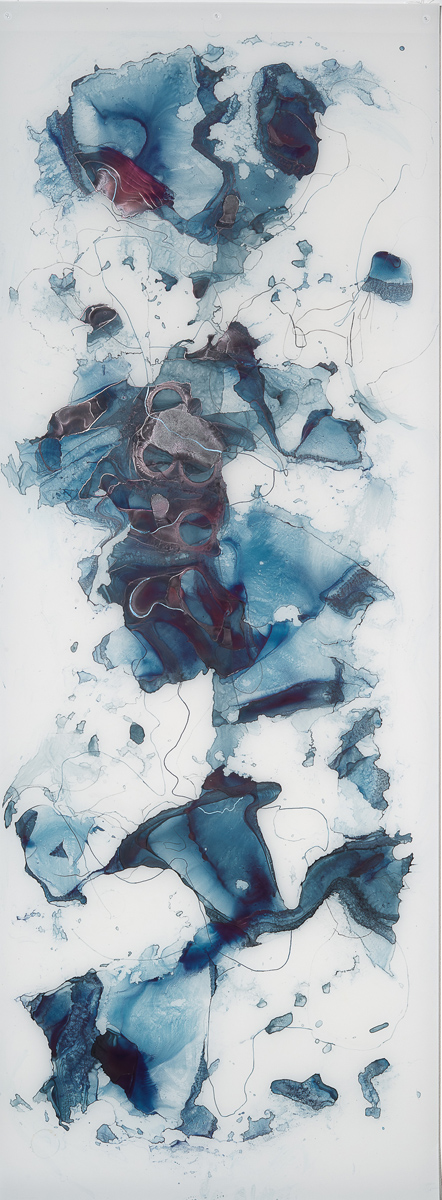By Rebecca Haseltine
(c) February 2017
Artist Talk
“The Body is not a Figure”
Think Round Fine Arts
[This is a paraphrasing of my artist talk at Think Round Fine Arts in February 2017]
Why art? After the election in 2016, a lot of us were asking ourselves what we were doing. With the country coming apart at the seams, what was the point of making art? I know many artists began making political art, or added more political content to their work. I found that the experience of shock and distress that the election created did come into my work, but not in a literal way.
When I was around 9 years old my family drove over the Grapevine to visit the brand new LA County Museum of Art. It was situated near the Labrea Tar Pits, so as we drove down I had an image of the museum somehow sitting in the middle of a tar pit. The whole thing was very exciting: art and dinosaur bones in one spot! As we approached the museum, this image was verified – I could see the tall museum building was indeed standing in a big puddle. It turned out this was a decorative moat of water, not tar, but the image forever sticks in my head as an art museum rising out of a tar pit.
In the museum I came around a corner and saw a giant blue painting. It was all blue. That was it. Bright blue and nothing else. I was stopped. Why did the artist paint all one color? Why blue? Why this blue? Why did the museum hang this painting? What am I doing staring at it? I began to see the light reflecting on the surface of the painting, and began to see more than blue. But I didn’t get it. Something was being communicated to me and I didn’t know what it was. But I could feel something.
Then I encountered a series of erotic drawings by Picasso. I stared at them secretly so my parents wouldn’t see me looking. I didn’t understand. Why did the museum hang these drawings and not other ones? Why was Picasso drawing cartoons of naked people? Why were there men that were part bull? I didn’t understand, but I could tell he was doing something, and something was being communicated, because I could feel it.
This feeling of not understanding but feeling – that is where my work comes from. That place of I don’t understand is a well from which an endless stream of images can emerge.
When I was a young adult I visited a retrospective of George Brach’s paintings at the Berkeley Art Museum. I had seen cubism before, but not up close like that. I ate the paintings one after another with a ridiculous awe. This, I realized, THIS is REALISM! This is what things actually look like when your eye jumps from one thing to another and you see a color here, an edge there, and everything is jumbled together in your head. I was stunned. This was so brilliant – that an artist could portray how things actually looked!
So why art? It can do things other things can’t do. It can talk about things that otherwise we wouldn’t be able to describe. It’s a translation of our experience into something we can look at. What does this have to do with how the world runs? I have no idea, but I do know that we also create another world that is unorganized and unorganizable, that is ungoverned and ungovernable. This is the world that my work emerges from.
My show is titled “The Body is not a Figure”. This is to highlight somatic perception and to free up the body from what it looks like. There is a figurative tradition that I respect and have studied deeply. For 25 years I’ve also been working from a different perspective, that of direct experience – the body as an experience.
Are you your body? Is your body you? Does your body belong to you? Do you belong to your body? Are you in your body? Is your body in you? [We discussed this; one person said her spirit was free from her body, and that when she dies, her spirit will be completely free. Another person talked about living in a body that is injured and disabled and she used the word ‘betrayed’ – she felt betrayed by her body.] These are not answerable questions, but they’re not rhetorical questions. They are living questions.
We can bring our awareness into our body and take a deep journey. We can become aware of our lungs, feel them breath in and out. We can tune into the lung tissue itself and feel it expand and condense. We can become aware of our lung cells, and feel them expand and condense. We can at least imagine the molecules that make up the cells. We can then imagine the atoms that make up the molecules. There is a huge space between the nucleus of the atom, with its protons and neutrons, and the electron shell. You can imagine a football field: the nucleus is a fly in the center of the field, and the electrons are a bunch of gnats flying around the edge of the field. We can also imagine two or three gnats flying all over the place between the fly nucleus and the edge of the field. Either way this is a huge empty space with a few gnats zooming around in it. In every atom. We are made of mostly of empty space. There is more emptiness inside than substance. I find this deeply comforting.
In another way the body carries a memory of our ancestry: we can bring awareness into the bones, for example, and find our way back to our ancestors in Africa, and then we can feel our way back to the apes that preceded the Australopithecines and Neanderthals. We can keep finding our way back to the earliest mammal ancestors, all the way back to that creature that first pulled itself out of the sea and decided to slog around on land. Before that we were sea creatures, and before that were our earliest ancestors, the first life: single-cell beings living in the sea. From there we can go back to the elements that coalesced to form these cells. These minerals are present from the earliest beginnings of the earth, which was born out of the formation of the solar system. And the solar system expanded and formed out of its beginnings in the big bang. Here we are again with vast space. This is ancestry. We know it via the body. The body knows what it is made of and where it came from. I find this comforting.
There’s so much information there to be tapped into, and the body does give us so much that is unknown, and seemingly unknowable. But it can always give us experience. And we can know our experience in that inner knowing way. The knowing without knowing. And this, for me, is why art.

Comments: Add a Comment



